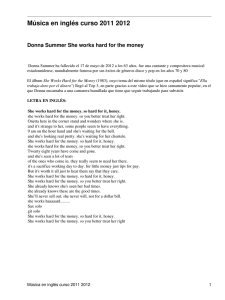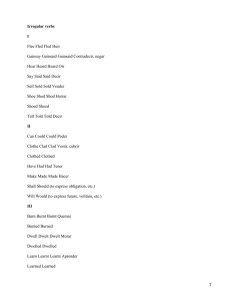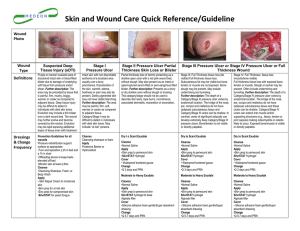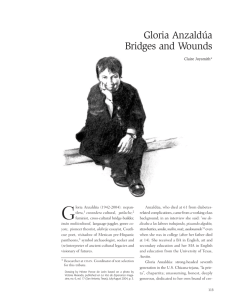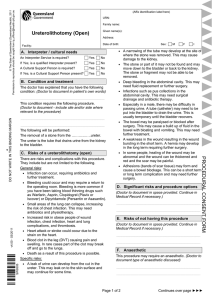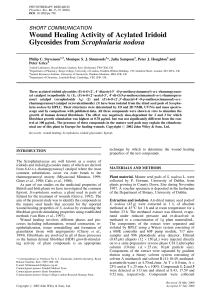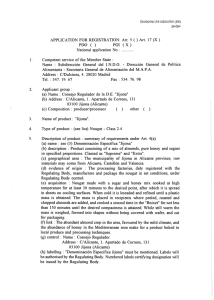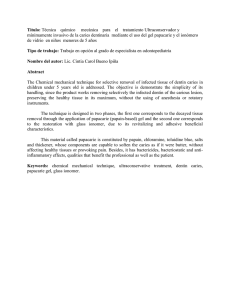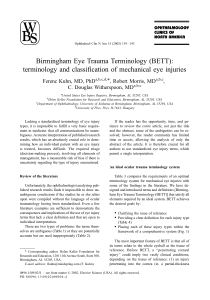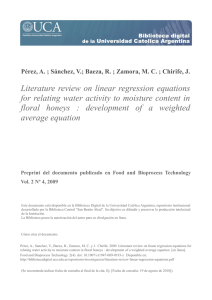Brochure Triticum - L
Anuncio
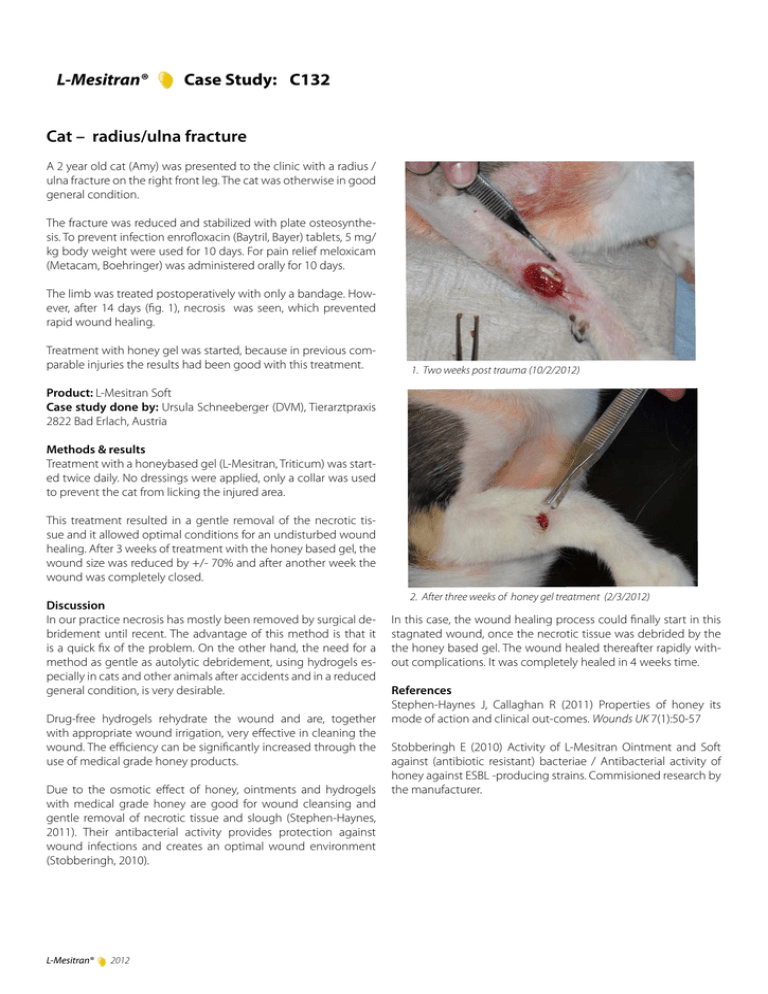
L-Mesitran® Case Study: C132 Cat – radius/ulna fracture A 2 year old cat (Amy) was presented to the clinic with a radius / ulna fracture on the right front leg. The cat was otherwise in good general condition. The fracture was reduced and stabilized with plate osteosynthesis. To prevent infection enrofloxacin (Baytril, Bayer) tablets, 5 mg/ kg body weight were used for 10 days. For pain relief meloxicam (Metacam, Boehringer) was administered orally for 10 days. The limb was treated postoperatively with only a bandage. However, after 14 days (fig. 1), necrosis was seen, which prevented rapid wound healing. Treatment with honey gel was started, because in previous comparable injuries the results had been good with this treatment. 1. Two weeks post trauma (10/2/2012) Product: L-Mesitran Soft Case study done by: Ursula Schneeberger (DVM), Tierarztpraxis 2822 Bad Erlach, Austria Methods & results Treatment with a honeybased gel (L-Mesitran, Triticum) was started twice daily. No dressings were applied, only a collar was used to prevent the cat from licking the injured area. This treatment resulted in a gentle removal of the necrotic tissue and it allowed optimal conditions for an undisturbed wound healing. After 3 weeks of treatment with the honey based gel, the wound size was reduced by +/- 70% and after another week the wound was completely closed. Discussion In our practice necrosis has mostly been removed by surgical debridement until recent. The advantage of this method is that it is a quick fix of the problem. On the other hand, the need for a method as gentle as autolytic debridement, using hydrogels especially in cats and other animals after accidents and in a reduced general condition, is very desirable. Drug-free hydrogels rehydrate the wound and are, together with appropriate wound irrigation, very effective in cleaning the wound. The efficiency can be significantly increased through the use of medical grade honey products. Due to the osmotic effect of honey, ointments and hydrogels with medical grade honey are good for wound cleansing and gentle removal of necrotic tissue and slough (Stephen-Haynes, 2011). Their antibacterial activity provides protection against wound infections and creates an optimal wound environment (Stobberingh, 2010). L-Mesitran® 2012 2. After three weeks of honey gel treatment (2/3/2012) In this case, the wound healing process could finally start in this stagnated wound, once the necrotic tissue was debrided by the the honey based gel. The wound healed thereafter rapidly without complications. It was completely healed in 4 weeks time. References Stephen-Haynes J, Callaghan R (2011) Properties of honey its mode of action and clinical out-comes. Wounds UK 7(1):50-57 Stobberingh E (2010) Activity of L-Mesitran Ointment and Soft against (antibiotic resistant) bacteriae / Antibacterial activity of honey against ESBL -producing strains. Commisioned research by the manufacturer.

